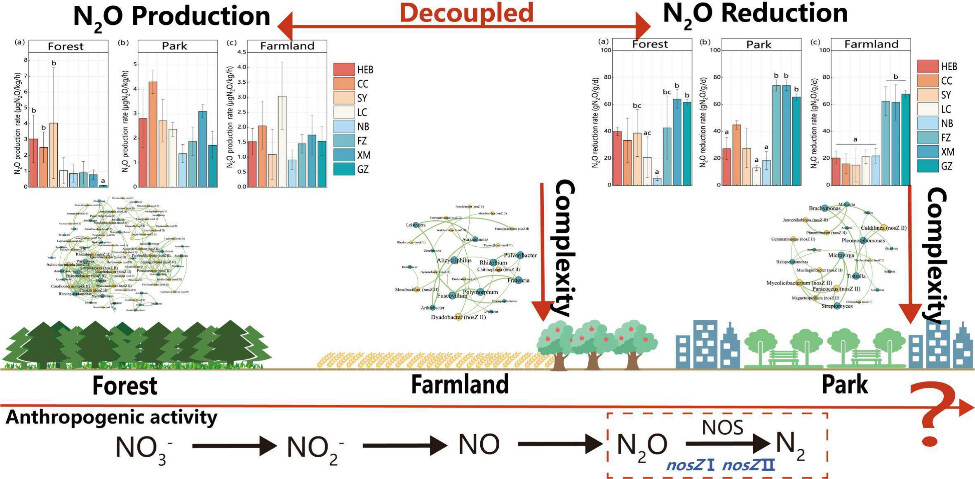

Nitrous oxide (N2O) is a potent greenhouse gas with various production pathways. N2O reductase (N2OR) is the primary N2O sink, but the distribution of its gene clades, typically?nosZI and atypically?nosZII, along urbanization gradients remains poorly understood. Here we sampled soils from forests, parks, and farmland across eight provinces in eastern China, using high-throughput sequencing to distinguish between two N2O-reducing bacteria clades. A deterministic process mainly determined assemblies of the?nosZI communities. Homogeneous selection drove?nosZI deterministic processes, and both homogeneous and heterogeneous selection influenced?nosZII. This suggests?nosZII is more sensitive to environmental changes than?nosZI, with significant changes in community structure over time or space. Ecosystems with stronger anthropogenic disturbance, such as urban areas, provide diverse ecological niches for N2O-reducing bacteria (especially?nosZII) to adapt to environmental fluctuations. Structural equation modeling (SEM) and correlation analyses revealed that pH significantly influences the community composition of both N2O-reducing bacteria clades. This study underscores urbanization’s impact on N2O-reducing bacteria in urban soils, highlighting the importance of?nosZII and survival strategies. It offers novel insights into the role of atypical denitrifiers among N2O-reducing bacteria, underscoring their potential ecological importance in mitigating N2O emissions from urban soils.


